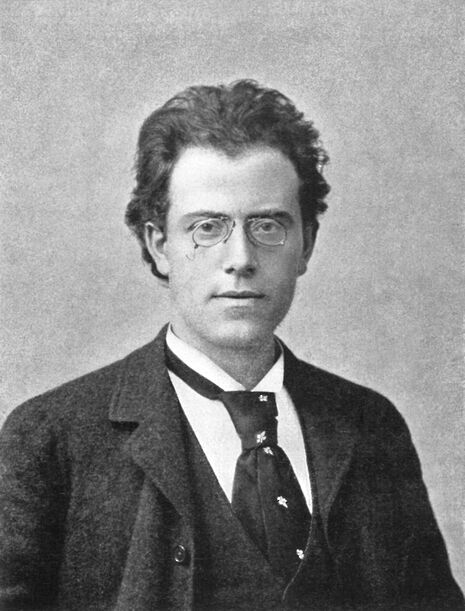Review: Mahler’s Symphony No. 3
Thea Sands reviews an obliterating evening at King’s College Chapel

King’s College Chapel, the stage for Mahler’s Symphony No.3. As one of the longest symphonies in the standard repertoire, spanning just under 100 minutes, it may seem like a task of endurance for both performer and listener. But this performance, with the reins firmly in conductor Paul Daniel’s hands, created a soundscape capable of gripping and deceiving your senses.
Premiered in 1902, Mahler’s work strikes the ear as a fusion between the lyricism and transcendence of Romanticism and the turbulence that the twentieth century ushered in. This rendition perfectly captured the principle of dynamic contrast, with the first (of six) movements, Kraftig. Entschieden (strong and decisive), featuring bellowing power from the horn section, accompanied by a thundering bass drum. Even though the melodious, drawn out sections of the movement could seem never-ending, interest was easily restored through shattering interjections from the drum or great brass proclamations which echoed throughout the chapel like gunfire. This ability to cling onto every ounce of the listener’s attention rarely left the performance. Even the occasionally sharp strings or odd wrong note provided interest in a performance of a piece that is not entirely pure and harmonious. The noise of the outside world which occasionally burst the sonic bubble only aided the rugged quality of the music: the chattering of geese, the ringing of church bells and the final, mistakenly beaten triangle which echoed around King’s, leaving comic vibrations in the air, all satisfied the music’s need for flaws and moments of shock.
Although there was a lull in energy during the slow, lyric sections, the lines were still beautiful and provided a sense of space for your mind and eyes to wander, gazing up at the webbed roof of King’s and the ominous angels who adorn the beast of the organ. But I didn’t savour these moments much, as I was always hoping for the return of the wall of sound that the orchestra was clearly capable of producing. In these moments I wanted my dreamlike state to be obliterated by the sheer power and authority of the musicians. This symphony demands a cacophony, especially in such a grandiose setting.
“This symphony demands a cacophony, especially in such a grandiose setting.”
Following the interval, and a solution to the case of the missing choirboys (they seemed to vanish from the wings, missing their cue), the second half began, offering character ranging from the ethereal to the folksy, and the religious to the warped and war-like. Named Tempo di Menuetto (in the tempo of a minuet), elements of the second movement resembled the perpetually unwinding and self-imploding nature of Ravel’s La Valse, as the previously Disney-esque melodic perfection began to be crunched up by the orchestral machine, creating the excruciating static noise of an old television set. Shifting from the natural to the metropolitan, it was a phenomenal sound.
The third movement, Comodo (Scherzando) (comfortably like a Scherzo) – an instrumental version of a song from Mahler’s Des Knaben Wunderhorn – featured pure flugelhorn calls effortlessly played by Matilda Lloyd, which added an element of military respect to the piece. The vastness of the chapel altered the timbre, creating an alien sound. It seemed to Americanise the short section, but this was possibly only because the Trump catastrophe was still lingering on my mind. This doom-induced haze was exacerbated by contralto Claudia Huckle gravely floating towards the platform from the back of the chapel during the fourth movement, Sehr Langsam-Misterioso (very slowly, mysteriously), releasing a rich tone that counterbalanced the lightness of the instrumental parts, particularly the oboe. By comparison to the playful and jubilant singing of the choirs and trebles in the fifth movement, Lustig im Tempo und keck im Ausdruck (cheerful in tempo and cheeky in expression), Huckle’s voice seemed quite male, distinct from any other instrumental or vocal force, and quite unlike her spirit-like performance when entering the Chapel.
The final movement, Langsam-Ruhevoll-Empfunden (slowly, tranquil, deeply felt) proved that this symphony is a work of total contrast and conflict, and the eclectic ensemble managed to convey this and the story of the piece well, ending with a magnificent climactic resolution which had to come from that incredible wall of sound. The standing ovation proved that the power of the performers and musicians won the audience’s appreciation for an emotionally twisting work. It’s all about the wall of sound.
 News / Night Climbers call for Cambridge to cut ties with Israel in new stunt15 April 2024
News / Night Climbers call for Cambridge to cut ties with Israel in new stunt15 April 2024 News / Cambridge University cancer hospital opposed by environmental agency12 April 2024
News / Cambridge University cancer hospital opposed by environmental agency12 April 2024 Features / Cambridge’s first Foundation Year students: where are they now?7 April 2024
Features / Cambridge’s first Foundation Year students: where are they now?7 April 2024 Comment / UK universities are sacrificing widening access for foreign fees11 April 2024
Comment / UK universities are sacrificing widening access for foreign fees11 April 2024 Film & TV / Dune: Part Two is a true epic for the ages11 April 2024
Film & TV / Dune: Part Two is a true epic for the ages11 April 2024


